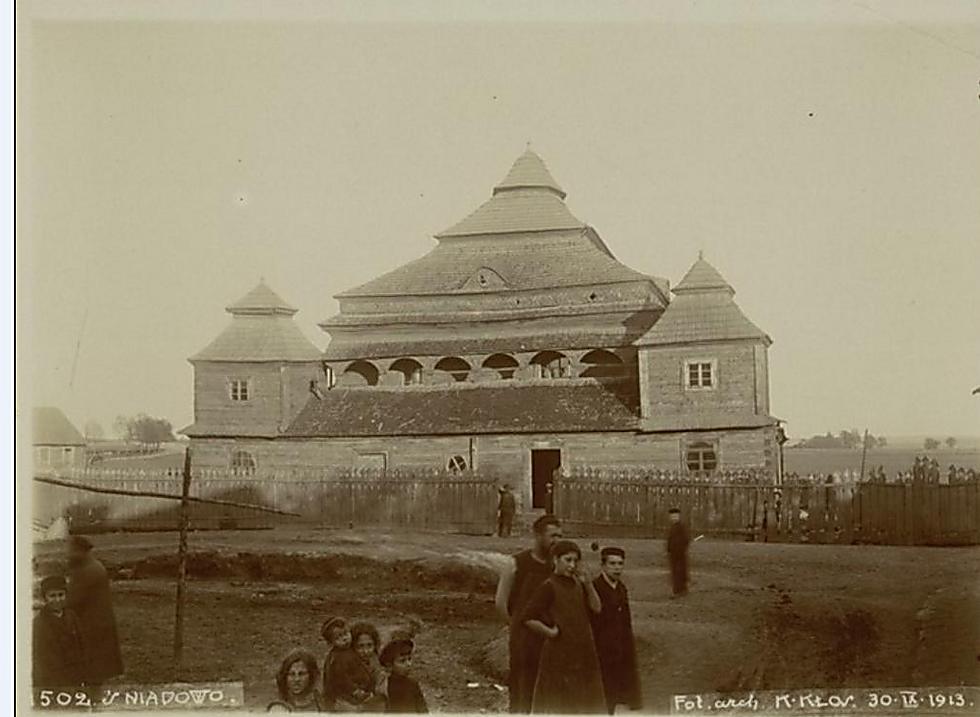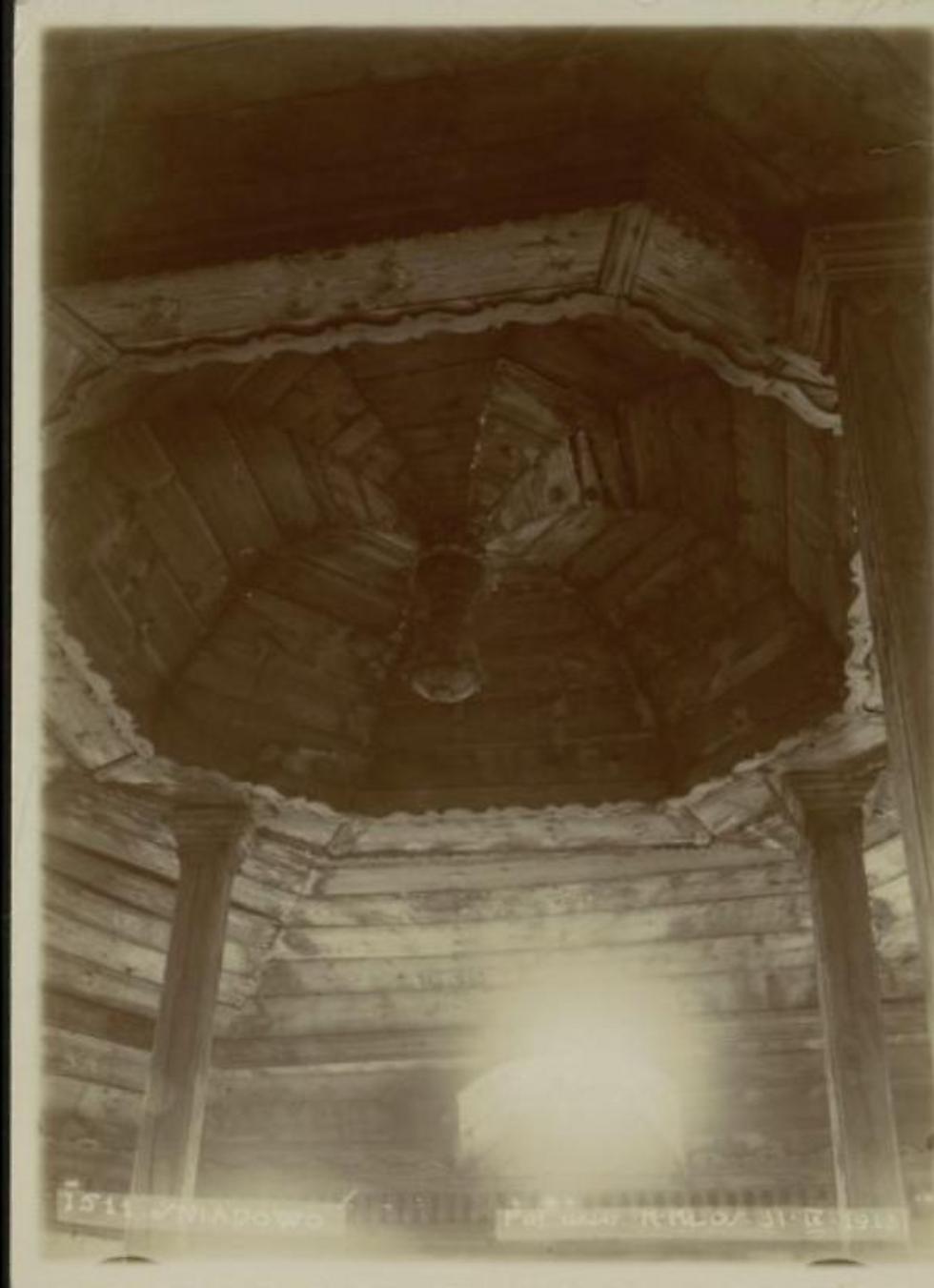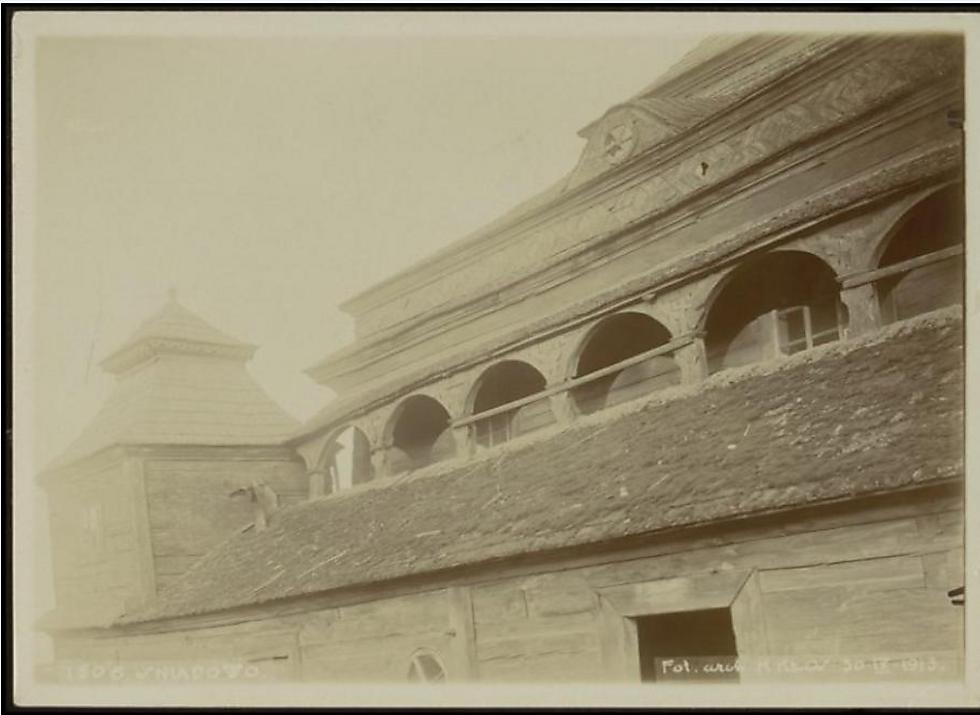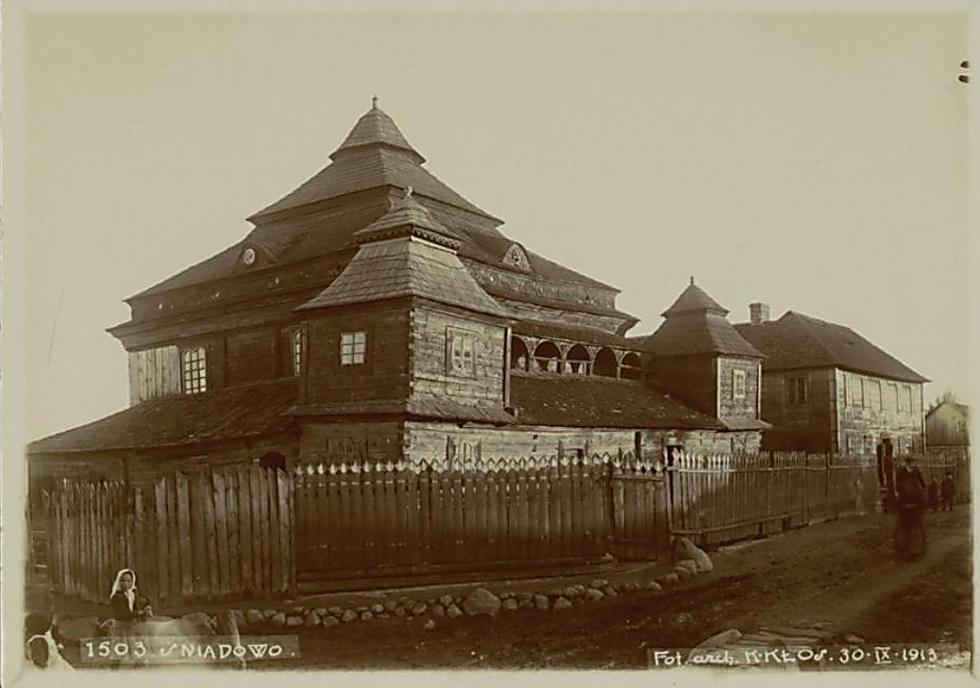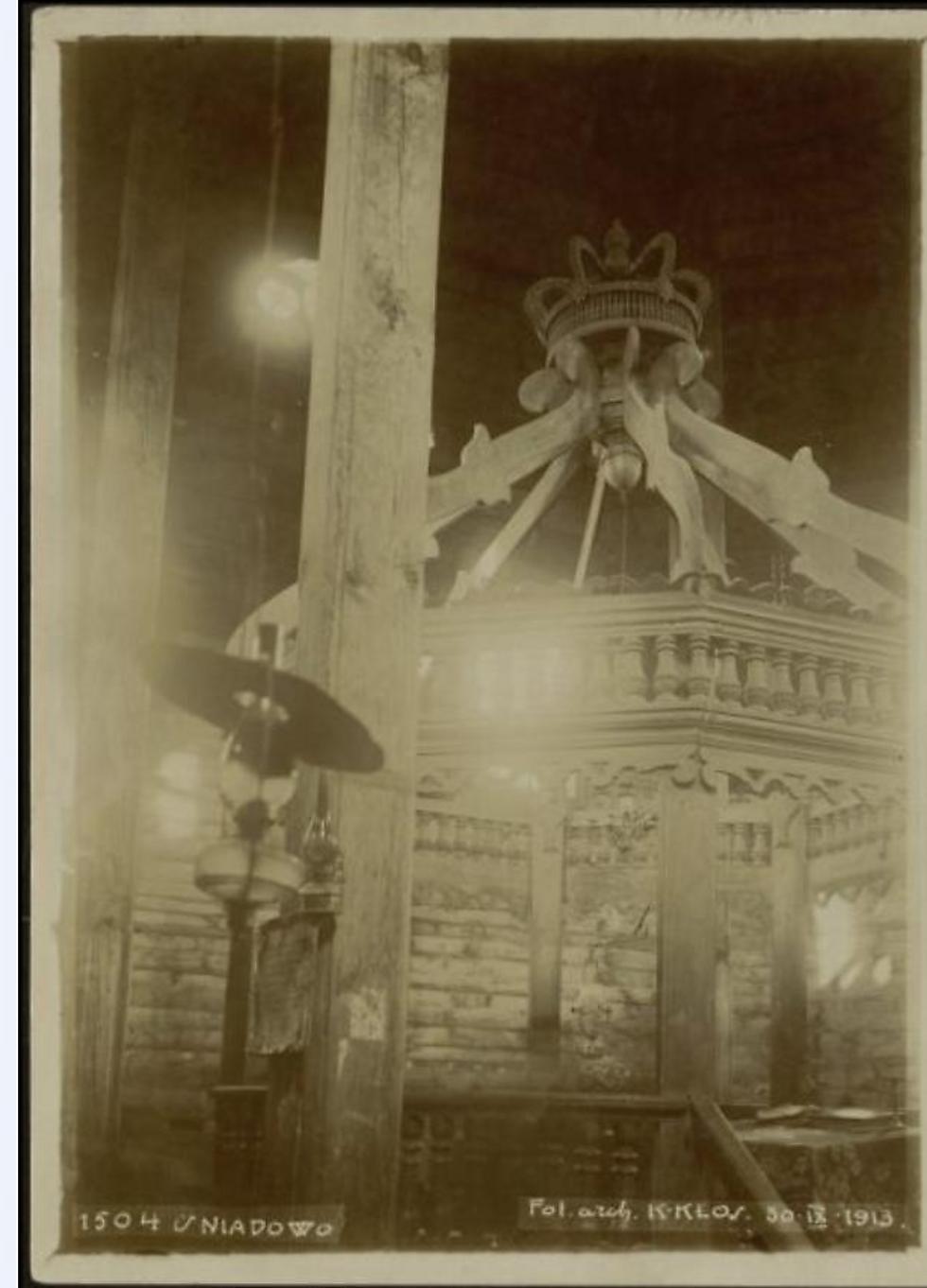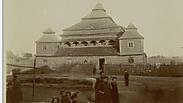
However, the National Library of Israel has now published a series of rare photographs by Polish architect and historian Konrad Kalush, who photographed the structure before it burned down.
The photographs were discovered in the estate of the rabbi and researcher Shmuel Poznanski. They contain meticulous and unique documentation of the interior of the wooden synagogue, the dome of its magnificent Ark, and the Women's gallery.
The only documentation
The photographs themselves were part of an architectural memorial project by Konrad Kalush and his partner, the architect Oscar Sosnowski, in which the pair documented various structures of architectural importance in Poland.
The builders and architects of the building have remained anonymous to this day.
On the eve of Rosh Hashanah 1913, Kalush and Sosnowski came to commemorate the synagogue with the lens of their camera not knowing that it would be the only documentation.
The photographs themselves immortalized not only the beautiful architectural structure of the ancient synagogue, but also the worshipers.
The synagogue itself was built in northern Poland as a structure known at the time as a model of Jewish architecture. In this area, synagogue construction was characterized by unique architecture that drew inspiration from a variety of sources.
Interior decoration was also a unique element, since in various places in Europe it was forbidden to decorate the interiors of synagogues with paintings, so as not to distract worshipers from prayer.
The Russians burned, the Nazis destroyed
Although the synagogue began as a square structure, over the years it added various wings and galleries as well as decorations and artistic motifs such as the "broken" roof that appears to be made of different levels.
However, the highlight of the magnificent building was undoubtedly the bimah (alter) of the synagogue, which stood in its center, as is customary. Above this stage was a magnificent dome that became the focus of Kalush's photographs.
According to historical documentation, there was a Jewish community at the end of the 19th century in which there were about 1,300 Jews.
During the First World War, the Russian commander ordered the town to burn the synagogue and expel its Jews, most of whom were deported to other countries.
Until the German occupation, the Jewish community succeeded in recovering and growing to some 869 people, some of whom were engaged in the typical occupations of craftsmen and small merchants. Among them was even a filmmaker.
The Jewish inhabitants of the town continued to suffer harassment and riots by locals until the Nazi occupation in 1941, according to the Polish Jewish Heritage Center.
Some of the Jewish inhabitants of Śniadowo were murdered by the Nazis in the town itself, and most of them were sent to the nearby Łomża Ghetto and finally to the Auschwitz death camp in 1943.
The photographs constitute the only photographed documentation of the magnificent synagogue and the only remnant of vibrant Jewish life in Poland in the period before the two World Wars.
(Translated and edited by Fred Goldberg)













